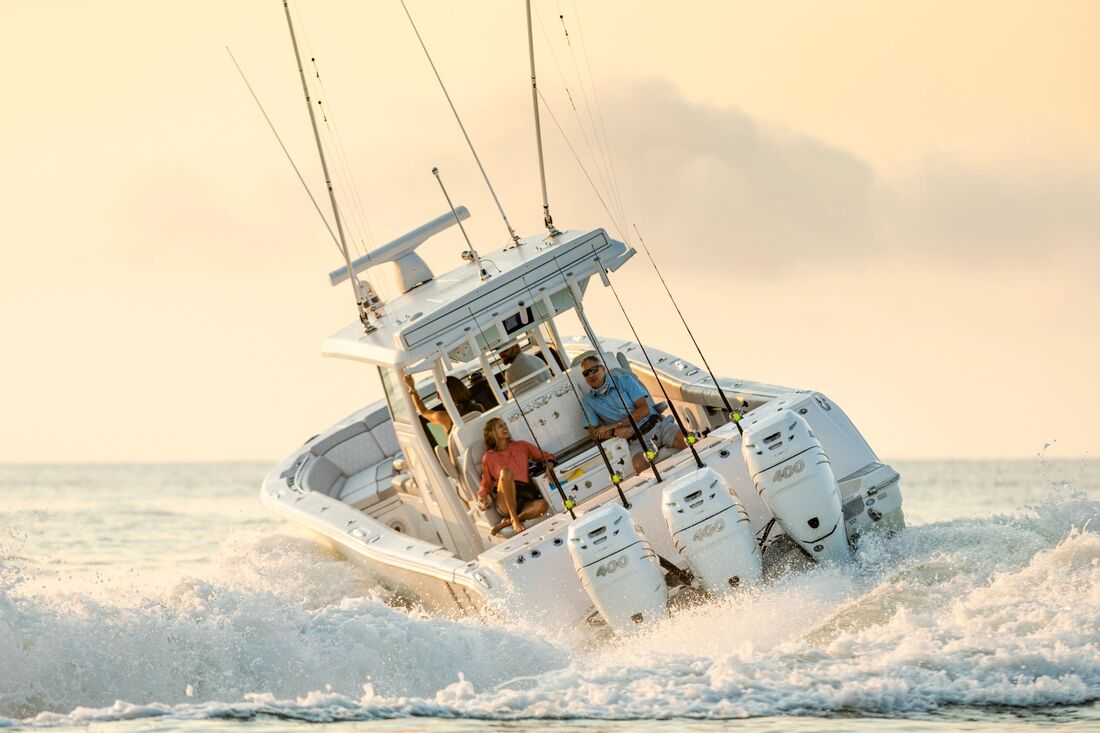FAQsHere are some of the most common questions we receive about. If you are unsure of what you are supposed to do, or can not understand the answer to any of these questions, please do not hesitate to contact us. We will be happy to guide you through processes over the phone to make sure your motor is run safely and properly.
|
Q: Is your service department by appointment or can I just drop off anytime?
A: Our service department is by appointment only due to limited boat storage space. During peak times in spring & summer service drop off appointments are typically 2-3 weeks out. Call or email to set up your appointment today! Please note all service is not promised same day unless discussed prior to drop off.
Q: How often should I change my water pump impeller?
A: Normal use warrants a water pump impeller replacement every other year. If you put 100 hours or more, then it should be changed every year. If the motor has been sitting, it is usually necessary to change the impeller, as the rubber dries out and the vanes get set in place, limiting water flow and possibly leading to overheating.
Q: What gas to oil mixture should I use in my 2-Stroke outboard engine?
A: With today’s oils, most new and old 2-stroke engines use a 50:1 gas to oil ratio. One pint of TCW3 2-Stroke oil will treat 6 gallons of gasoline.
Q: What do I need to do, to have my engine ready for the spring? (De-Winterizing)
A: It is recommended to run your engine on a water flush, to burn off fogging fluids in the system. Also, check your lower unit for water by opening your lower unit drain screw. After running you engine for the first time, remove your spark plugs and clean or replace them as needed.
Q: What should I do to prevent gas problems in my gas tank?
A: Your first line of defense is to use additives such as Star Tron Enzyme Fuel Treatment or Mercury's Quickare Step 1 fuel treatment. These help the gas and ethanol from separating in your tank, while helping your gas stay fresh. The use of a Water Separating Fuel Filter is a must these days with the poor quality of gas; it is only a matter of time before you will have water in your gas. Another tip is to try filling your gas tank with only the amount of gas you think you will use in your trip, this eliminates excess gas sitting in you tank and being able to go bad.
*NOTE*: StarTron and equivalent products will NOT remove water once it has gotten into your tank in large quantities. They are PREVENTATIVE measures. If water is in your gas, you will need to pump the tank dry.
Q: How do I run my engine when I am not in the water?
A: To run your engine out of the water, you would need a Motor Flushing device that attaches to your garden hose and fits around the water pick-ups on the lower unit of your engine. Some engines, such as Jet engines or small outboards, use a special adapter that feeds the power head direct from your garden hose. A large bucket with a continuous flow of water also works in some applications, but is not the preferred choice. CAUTION: DO NOT RUN YOUR ENGINE WITHOUT A WATER SOURCE.
Q: How do I determine if my boat is a short shaft vs. long shaft?
A: To determine your transom length, you would measure from the top of the transom to the deepest part of the boat hull. 15" is a short shaft, 20" is a long shaft, and 25" is an extra long shaft.
Q: How big of a motor can I put on my boat?
A: Maximum horsepower ratings are established for your boat by the boat manufacturer and then certified by the USCG. A plate fastened to your hull provides that information. We strongly recommend that you comply with the maximum horsepower rating that has been established for your boat. This rating is mainly based on the torque the engine will place on the transom, not just the actual weight of the engine.
Q: How do I know which motors models have electric start, power trim, or a tiller?
A: The listing below shows Mercury model designations. From the first few letters in each model number you can easily identify the specifications of the motor.
M = Manual
E = Electric
H = Hand (Tiller)
PT = Power Trim
L = Long Shaft
XL = Extra Long Shaft
O = Oil Injection
EFI = Electronic Fuel Injection
DFI = Direct Fuel Injection
PK = Pro Kicker
BF = Big Foot
GA = Gas Assist
A: Our service department is by appointment only due to limited boat storage space. During peak times in spring & summer service drop off appointments are typically 2-3 weeks out. Call or email to set up your appointment today! Please note all service is not promised same day unless discussed prior to drop off.
Q: How often should I change my water pump impeller?
A: Normal use warrants a water pump impeller replacement every other year. If you put 100 hours or more, then it should be changed every year. If the motor has been sitting, it is usually necessary to change the impeller, as the rubber dries out and the vanes get set in place, limiting water flow and possibly leading to overheating.
Q: What gas to oil mixture should I use in my 2-Stroke outboard engine?
A: With today’s oils, most new and old 2-stroke engines use a 50:1 gas to oil ratio. One pint of TCW3 2-Stroke oil will treat 6 gallons of gasoline.
Q: What do I need to do, to have my engine ready for the spring? (De-Winterizing)
A: It is recommended to run your engine on a water flush, to burn off fogging fluids in the system. Also, check your lower unit for water by opening your lower unit drain screw. After running you engine for the first time, remove your spark plugs and clean or replace them as needed.
Q: What should I do to prevent gas problems in my gas tank?
A: Your first line of defense is to use additives such as Star Tron Enzyme Fuel Treatment or Mercury's Quickare Step 1 fuel treatment. These help the gas and ethanol from separating in your tank, while helping your gas stay fresh. The use of a Water Separating Fuel Filter is a must these days with the poor quality of gas; it is only a matter of time before you will have water in your gas. Another tip is to try filling your gas tank with only the amount of gas you think you will use in your trip, this eliminates excess gas sitting in you tank and being able to go bad.
*NOTE*: StarTron and equivalent products will NOT remove water once it has gotten into your tank in large quantities. They are PREVENTATIVE measures. If water is in your gas, you will need to pump the tank dry.
Q: How do I run my engine when I am not in the water?
A: To run your engine out of the water, you would need a Motor Flushing device that attaches to your garden hose and fits around the water pick-ups on the lower unit of your engine. Some engines, such as Jet engines or small outboards, use a special adapter that feeds the power head direct from your garden hose. A large bucket with a continuous flow of water also works in some applications, but is not the preferred choice. CAUTION: DO NOT RUN YOUR ENGINE WITHOUT A WATER SOURCE.
Q: How do I determine if my boat is a short shaft vs. long shaft?
A: To determine your transom length, you would measure from the top of the transom to the deepest part of the boat hull. 15" is a short shaft, 20" is a long shaft, and 25" is an extra long shaft.
Q: How big of a motor can I put on my boat?
A: Maximum horsepower ratings are established for your boat by the boat manufacturer and then certified by the USCG. A plate fastened to your hull provides that information. We strongly recommend that you comply with the maximum horsepower rating that has been established for your boat. This rating is mainly based on the torque the engine will place on the transom, not just the actual weight of the engine.
Q: How do I know which motors models have electric start, power trim, or a tiller?
A: The listing below shows Mercury model designations. From the first few letters in each model number you can easily identify the specifications of the motor.
M = Manual
E = Electric
H = Hand (Tiller)
PT = Power Trim
L = Long Shaft
XL = Extra Long Shaft
O = Oil Injection
EFI = Electronic Fuel Injection
DFI = Direct Fuel Injection
PK = Pro Kicker
BF = Big Foot
GA = Gas Assist

